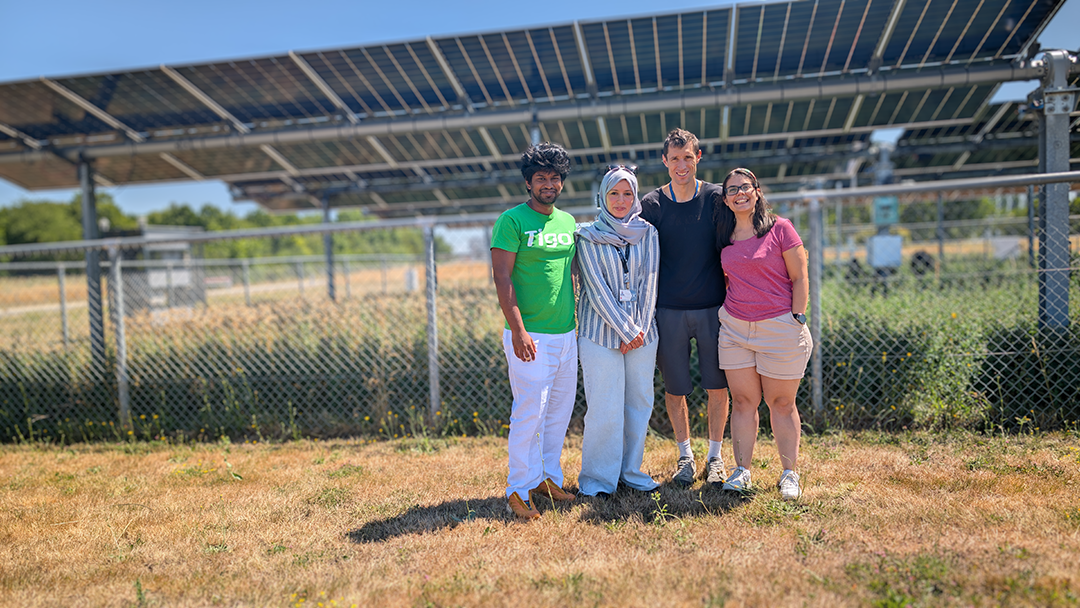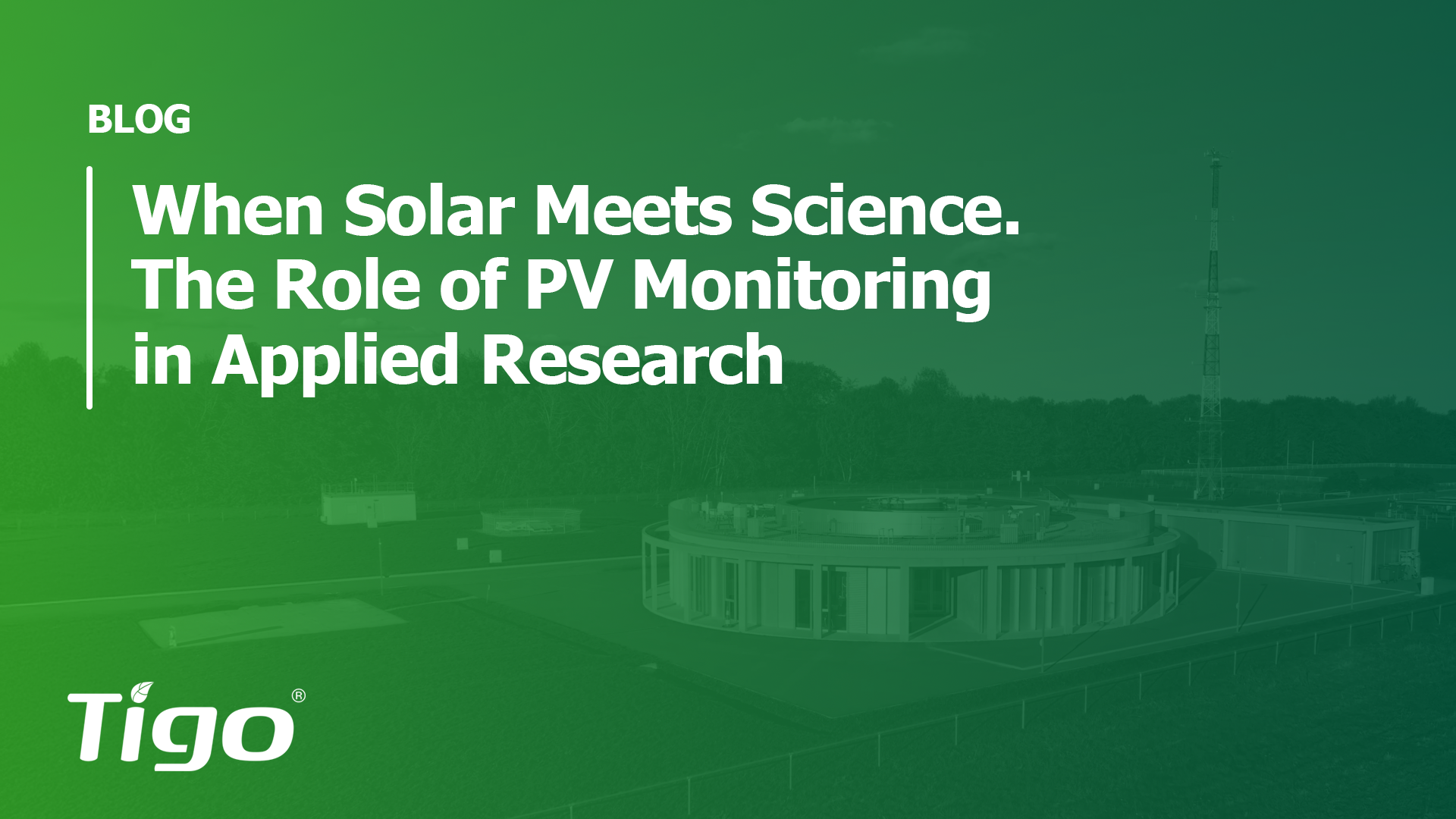Blog
August 21, 2025
When Solar Meets Science - The Role of PV Monitoring in Applied Research

The line between technological innovation and applied research is becoming increasingly thin in today’s energy landscape. A concrete example comes from two experimental projects that employ Tigo technology to collect high-resolution performance data at the module level. These projects are promoted by Energy4Climate (E4C), one installed at the SIRTA atmospheric observatory (Site Instrumental de Recherche par Télédétection Atmoshpérique) in Paris region, and the other is at the University of French Polynesia (UPF) Campus.
Energy4Climate Center of Institute Polytechnique de Paris gathers nearly 30 laboratories working on four cross-cutting themes to reduce greenhouse gas emissions, improve energy efficiency, deploy renewable energy and propose relevant energy policies. E4C develops platforms and demonstrators in order to test, under real life conditions, methods, management and modelling solutions. E4C is supported by 3rd Programme d’Investissements d’Avenir (ANR-18-EUR-0006-02) and the two projects below are co-financed by Foundation of Ecole polytechnique (Research Chair “Défis Technologiques pour une Énergie Responsable” or “Technological Challenges for Responsible Energy”, financed by TotalEnergies).
Project #1 – Four PV Technologies Put to the Test in Tahiti
The first of the two projects is hosted at the UPF Campus in Tahiti, a tropical environment with particularly challenging conditions: strong winds, low seasonal rainfall, and a high risk of dust and dirt accumulation on PV modules.
The plant includes both monofacial and bifacial PV modules, allowing for a comparative analysis of their performance under similar environmental conditions. The bifacial portion of the system integrates modules from multiple manufacturers, enabling the evaluation of different technologies and designs in terms of energy yield, reliability and response to varying conditions. Tigo TS4 optimizers were installed to monitor the performance of each individual module – voltage, power, and current – and to transmit the data via API to the E4C’s datahub analysis platform.
The goal is to precisely analyze the impact of environmental conditions on each module type. To complete the picture, an advanced environmental monitoring system provides irradiation and temperature data for each section, enabling highly accurate cross-analysis.

Project #2 – Agrivoltaics and Bifacial Modules: Synergies Between Crops and PV in France
The second installation is hosted at SIRTA, one of Europe’s leading atmospheric observatories, with more than 200 instruments monitoring continuously the atmosphere environment. The installation is part of the AgriPV-ER project, which contributes to INRAE’s Pôle National de Recherche sur l’Agriphotovoltaïsme (or “National Research Center for Agrivoltaics”). The project is supported by France 2030 and by the PEPR TASE (22-PETA-0007).
This project focuses on the integration of agriculture and photovoltaics. In Palaiseau, inside the SIRTA observatory, an agrivoltaic system combines the cultivation of alfalfa and wheat with the installation of bifacial PV modules above the crops. More than 50 instruments are deployed to monitor meteorological, soil, radiation and PV state variables.
Here too, Tigo TS4 optimizers enable the collection of detailed module-level data, which is essential to analyze and model the interaction between plant growth cycles and the energy performance of the PV system.
One of the most interesting findings from the study concerns the seasonal variation of albedo, that is, the soil’s (or in this case, vegetation’s) ability to reflect sunlight. In milder seasons – and especially between late March and early April 2025 – there was a noticeable increase in Reclaimed Energy from the optimizers, caused by the irregular albedo produced by the vegetation cover and shading on some PV modules caused by the deployed instruments. During this period, plant growth peaks and fully shades the ground: the variation in leaf color and uneven distribution creates non-uniform light reflections, making the role of the optimizer even more critical – not just for performance monitoring, but also for maximizing energy production by reducing mismatch impact.
As the plants begin to wither, their color changes and albedo progressively decrease, inevitably affecting the yield of bifacial modules. On the other hand, during winter months, isolated albedo spikes are caused by brief snow events, but overall production remains lower due to unfavorable weather conditions.
It’s also worth noting that the plant is located in an area with a rainy, frequently overcast climate, resulting in natural fluctuations in production due to cloud cover. Thanks to Tigo’s power electronics, not only is maximum energy ensured in every condition, but these fluctuations can also be monitored with high precision – turning even complex and variable environmental conditions into valuable data to optimize system efficiency.

The Role of Tigo Technology in Scientific Research
“Tigo TS4 optimizers provide the values we need to study the performance of each module, as part of a much larger system,” said Moira Torres, Post-Doctorant at the GeePs Laboratory (Laboratoire de Génie Electrique et Electronique de Paris), part of CentraleSupélec. “This allows us to better understand how modules respond to different environmental conditions and to improve production forecasts. The data extracted from Tigo optimizers and processed and visualized through the Energy Intelligence platform, combined with environmental data, is not only used to validate existing models but also to develop new ones.”
Conclusion – Data Driving Innovation
These projects offer important confirmation: the data provided by Tigo technology not only supports the day-to-day operation of PV systems but also becomes a key tool for scientific research. In vastly different contexts – from tropical climates to European agricultural landscapes – module-level optimization proves essential to understanding, predicting, and improving the performance of the photovoltaic systems of the future.










